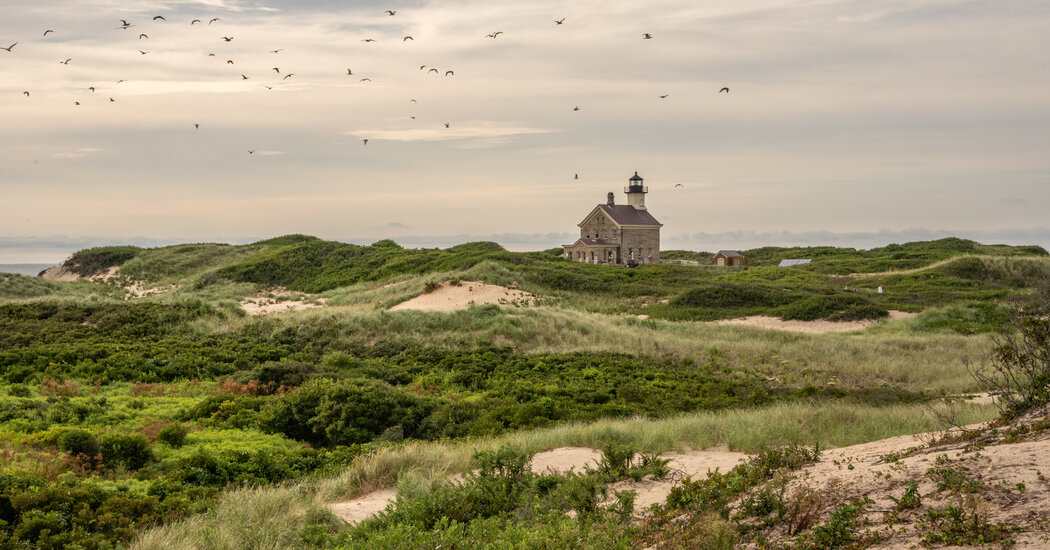Had I stepped into a scene from “Planet of the Gulls”? The sky resonated with the sound of flapping wings, and groups of the birds shrieked and stalked among the shrubs on a rocky beach at Block Island National Wildlife Refuge.
A fuzzy, freckled gull chick emerged from a bayberry bush, stared curiously at me as if it had spotted a Martian, and then waddled back to its hiding place.
It turned out I had stumbled on Rhode Island’s largest gull colony, and the reason so many other sunset watchers had stayed behind in their cars may have been that, as I later learned, the gulls are known to divebomb trespassers.
Preserves make up about 2,500 acres — nearly half — of Block Island, a nine-square-mile, pear-shaped speck of Rhode Island just northeast of Montauk, N.Y. With about 28 miles of trails, these areas provide a haven for numerous endangered animals, and anyone else seeking a little solitude.
On a tiny island whose seasonal population balloons, the preserves are rarely crowded, even in the summer. “Most people go to the beach,” Scott Comings, the associate director for the Nature Conservancy’s Rhode Island chapter, explained matter-of-factly.
The island is small enough that you can easily hit a preserve every day. During my week exploring, I never ran into more than two people at any of them, which enhanced the feeling of being far from civilization although I was never more than a few miles from the center of the island’s only town, New Shoreham.
In addition to the chance that you won’t see another soul there, you also won’t encounter bears or venomous snakes because there are none on Block Island. There also are no coyotes, foxes or raccoons. (Ticks are plentiful, so take proper precautions.) But you will see birds: About 300 species pass through in any given year. Because the island has few predators and sits in the Atlantic Flyway — the north-south migratory route along the East Coast — it is essentially a giant avian playground.
You can get started with programs like nature walks or talks through the Nature Conservancy and the Block Island Conservancy. They’ll orient you to the island’s dunes, waterways, marshes and hundreds of freshwater ponds before setting off on your own, or with your furry friends: Leashed dogs are allowed at many of the preserves.
You can buy a $3 Nature Conservancy trail map from the Chamber of Commerce office near the ferry. The Block Island Chamber of Commerce offers an app with maps.
Block Island…
Click Here to Read the Full Original Article at NYT > Travel…
